The snapping turtle (Chelydra serpentine) is a freshwater turtle native to North America. Also called snapper and Tortuga Lagarto, this animal gets its scientific name “serpentine” from its snake-like behaviors. There are two species of snapping turtles — the common snapping turtle and the alligator snapping turtle (Macrochelys temminckii). They belong to the reptilia class, are mostly brown, black, or tan, and can grow shells of up to 20 inches long.
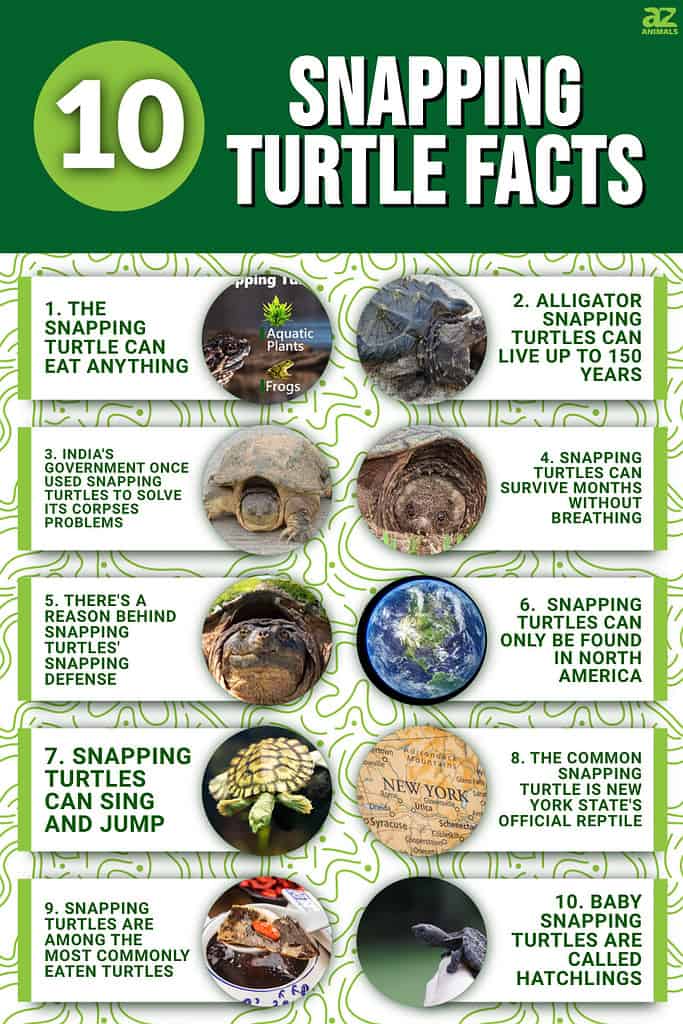
There are numerous fun facts relating to the snapping turtle. First, they are nocturnal animals with a maximum lifespan of about 50 years in the wild. Secondly, they’re solitary beings that have lakes, ponds, canals, and rivers for habitats. Snapping turtles also have mouths that resemble a bird’s hooked beaks. There are more incredible facts everyone must learn about the snapping turtle. We’ve discussed 10 of them below.
1. The Snapping Turtle Can Eat Anything

While most animals have specific things that they eat, the snapping turtle isn’t in any way selective of what goes into its mouth. It eats anything it can get its jaws around. The snapping turtle can eat carrion, invertebrates, fish, birds, small mammals, and amphibians. It also eats algae and has a large appetite for aquatic vegetation. The reason for this though is their habitat. Since they live in fresh or brackish water, the vegetation available falls victim to its widely acceptable appetite.
2. Alligator Snapping Turtles Can Live Up To 150 Years
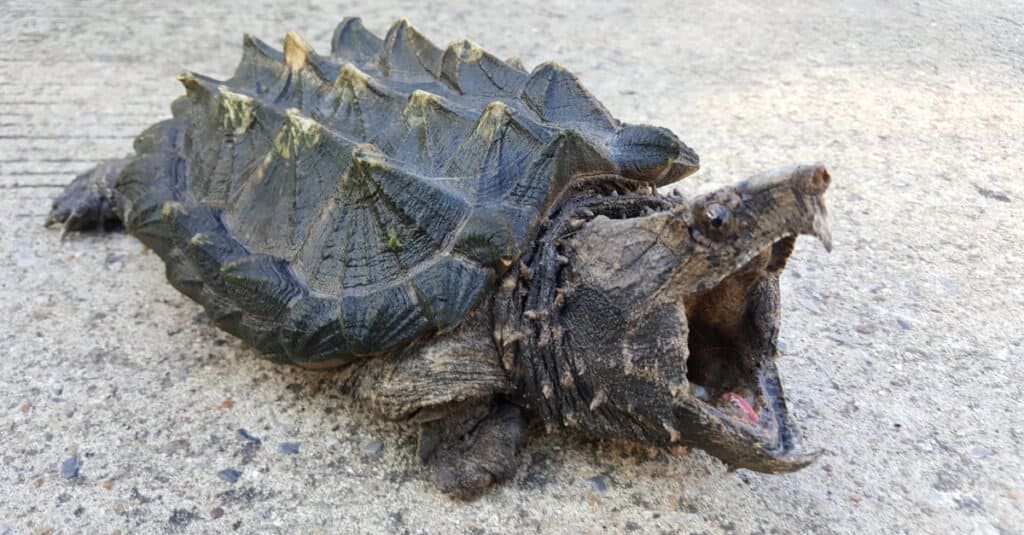
Alligator snapping turtles can live for as long as 150 years.
©Sista Vongjintanaruks/Shutterstock.com
Generally, snapping turtles have a lifespan of about 30-45 years in the wild. However, alligator snapping turtles can live for much longer. As of the 1970s, some reports showed that some alligator snapping turtles had musket balls and flint arrows in their shells. This indicates that they can live for as long as 150 years.
It’s worth mentioning that musket balls were projectiles from a muzzle-loaded long gun called a musket. These balls were among the first types of bullets worldwide and dated back to the 15th century. Meanwhile, the flint arrows are ammo shot from a bow.
3. India’s Government Once Used Snapping Turtles To Solve Its Corpses Problems
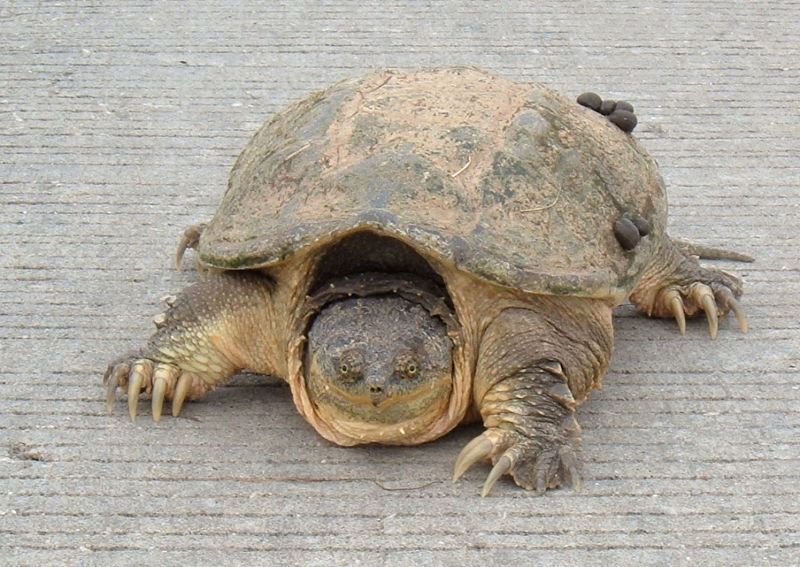
It may be the stuff of nightmares, but these turtles were used to clean bodies out of the Ganges.
India’s River Ganges is one of the most polluted water bodies on Earth. This river is home to effluents from industrial plants, millions of raw, untreated sewage, and vast contaminated agricultural runoff from wet monsoons. That’s not all—the river also receives numerous human and animal corpses and tons of crematoria ashes every day.
The Indian government came up with flesh-eating turtles to solve the corpse problem in the early 1990s. They released these flesh-eating turtles into the Ganges river to eat decomposing bodies. These turtles were trained to focus only on corpses and not attack swimmers and bathers.
4. Snapping Turtles Can Survive Months Without Breathing
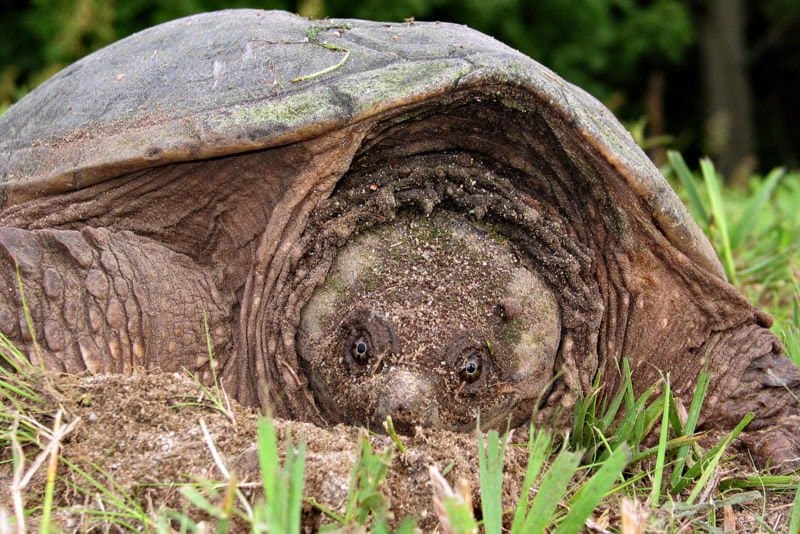
Snapping turtles have adapted to be able to spend winter months with a very slow metabolism.
The answer is simple for anyone wondering where snapping turtles go during the winter. Snapping turtles have adapted to spending winters in ponds and lakes for many months. While underwater for such extended periods, they survive without breathing with their lungs because they don’t have to. Snapping turtles’ metabolism reduces by around 90% during the winter. They can absorb oxygen underwater to stay alive through cloacal respiration—meaning they can use their cloaca to diffuse oxygen and carbon dioxide in and out of their bodies.
5. There’s a Reason Behind Snapping Turtles’ Snapping Defense

Snapping turtles partially bury themselves in the mud and snap at prey moving by.
©Patrick Rolands/Shutterstock.com
Turtles have shells that do the work of the human skin—they protect their internal organs. These shells also serve as a defense mechanism against predators. They can fully retract into their protective shells when they sense danger and remain safe inside. However, not all turtles have this degree of shell protection.
For example, snapping turtles cannot retract into their shells fully, leaving them vulnerable on land. Since they cannot hide safely in their shells like other turtles, they developed their biting/snapping tendencies to protect them from predators.
6. Snapping Turtles Can Only Be Found in North America

Snapping Turtles never spread from the continent of North America.
©iStock.com/Thaweesak Saengngoen
You can find snapping turtles nowhere in the world but in North America. Snapping turtles range from southern Canada through eastern and central USA to Florida. The common snapping turtle is the most far-reaching of all snapping turtle species.
7. Snapping Turtles Can Sing and Jump
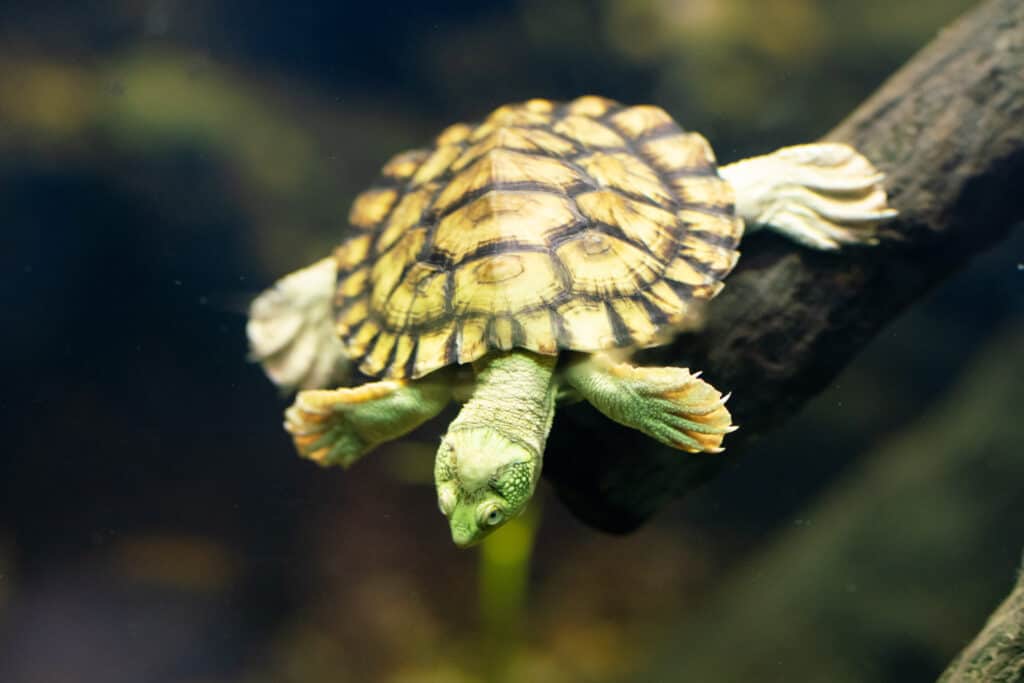
Turtles are not known as jumpers, but the snappers are the best of the bunch.
©iStock.com/Julien Viry
Snapping turtles make numerous sounds. First, they can hiss loudly and frighteningly. They can also whistle, click, bark, grunt, growl, squeak, chirp, cluck, and quack. If you think these are enough noises, you’re in for a shocker—snapping turtles also make sounds like they’re singing.
Animal experts consider snapping turtles to be the champion jumpers of all species of turtles. They can jump forward when disturbed, even though their jumping skills can’t compare to many other animals.
8. The Common Snapping Turtle Is New York State’s Official Reptile

It may sound strange, but the snapping turtle is New Yorks state reptile.
©BestStockFoto/Shutterstock.com
New York has numerous state emblems. For example, the state animal is the beaver, the state beverage is milk, and the state bird is the eastern bluebird. It also has the rose as its official flower and sugar maple as the state tree. Regarding reptiles, our beloved snapping turtle is New York’s official animal of choice. This may be because the snapping turtle is the largest freshwater turtle in the state.
9. Snapping Turtles Are Among The Most Commonly Eaten Turtles

Snapping turtles actually make tasty dishes.
©yuda chen/Shutterstock.com
Turtles are delicacies in many parts of the world, and snapping turtles are one of the favorites. They’re the main protein in turtle soups and stews (typical delicacies in China and many other Southern Asian countries). Their eaters describe them as delicious, tasty, and nutritious, although they’re challenging to clean.
According to some snapping turtle meat lovers, this animal tastes like combined flavors of fish, pork, beef, and chicken.
10. Baby Snapping Turtles Are Called Hatchlings
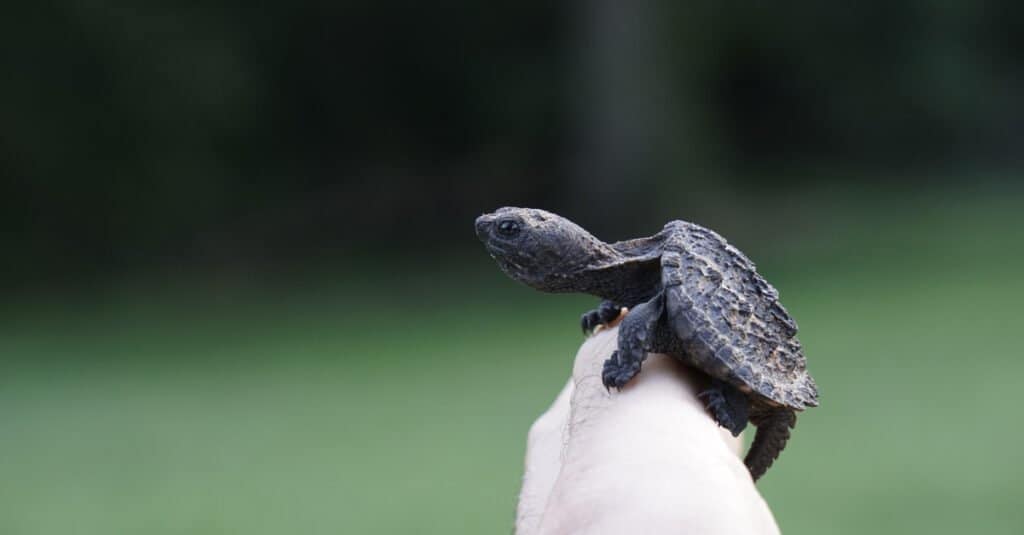
Little snapping turtles are called hatchlings.
©Hoth Cook/Shutterstock.com
Little snapping turtles have a name—hatchlings. These baby snapping turtles have a bad reputation for snapping fingers off with their jaws. That’s a lie, though, as there’s no record of such an event.
The photo featured at the top of this post is © Tyler Clemons/Shutterstock.com
Thank you for reading! Have some feedback for us? Contact the AZ Animals editorial team.






